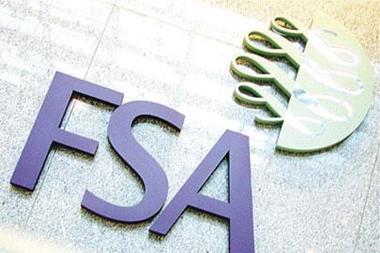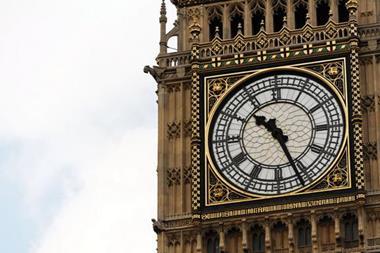The FSA’s brass plaque comes down early next year, but it could be as late as 2015 before it moves out for good
As we head into the summer break, the scorecard on the regulatory front is not very easy to mark.
George Osborne’s Mansion House speech on 16 June was at odds with the mood music that preceded it, with the Tories pressing ahead with their manifesto commitment to abolish the FSA over supposed Lib Dem objections. It seems that reading the runes for a coalition government is more difficult than for one run by a single party.
The Mansion House appears to be a popular location for Treasury ministers to make announcements about financial services regulation. Less than a month later, City minister Mark Hoban, amid various comments about banks there, added a small but very significant change to the rate of progress of the abolition of the FSA.
He added the word “interim” to the description of the Treasury discussion document on regulatory changes. This signalled, rather surreptitiously, that the two years he says it will take to complete the process might be a rather long two years.
And, sure enough, last week an interim consultation document was published. We still do not know very much more about how regulation will evolve post-FSA abolition. But based on both past experience and what we know about the FSA’s plans, a fairly clear pictures emerges.
Initially, around next February, workmen with a ladder will turn up at 25 The North Colonnade and take down the FSA logo in reception. But that is about the only manifestation of the FSA that will cease to exist.
For, although the shadow successor bodies will start work then, the people will be the same people that we deal with now, and the FSA board will continue to meet formally to make the instruments that keep the FSA (yes, the FSA) Handbook up to date and give the authority for enforcement notices and fines.
This is likely to go on for some years. If the changes in regulation in 1983 and 1997 are any guide, we should think in terms of 2015 for the date the shadow bodies become solid.
So what will happen between now and 2015? Solvency II will have arrived and passed into ‘intensive and intrusive supervision’. Intensive and intrusive supervision is an interesting concept. It cannot be found in any statute, law, regulation or rule.
It is a rhetorical flourish invented by the FSA to defend itself from criticism that it was responsible for the banking crisis. The Treasury consultation document only refers to ‘intensive supervision’, but whether ‘intrusive’ has been dropped for aesthetic reasons or as a signal for something is not clear.
Intensive or ‘intensive and intrusive’ – in truth there is only good and effective supervision. Anything less is incompetent; anything more is an abuse of power. We all benefit from good and effective supervision. For those pricing risk accurately, it protects them from the unfair competition of underpricing.
Whether a structure that contains a Prudential Regulatory Authority and a Consumer Protection and Markets Authority can achieve a properly modulated balance remains to be seen. ‘High-impact firms’, as the FSA currently terms them, will have two regulators. As the shadow bodies get going, they will begin to develop supervisory styles of their own. It is fervently to be hoped that Treasury ministers do not leave them so exposed that they go about their task defensively. IT
Richard Hobbs is director, regulatory consulting, at Lansons Communications.
Hosted by comedian and actor Tom Allen, 34 Gold, 23 Silver and 22 Bronze awards were handed out across an amazing 34 categories recognising brilliance and innovation right across the breadth of UK general insurance.














































No comments yet